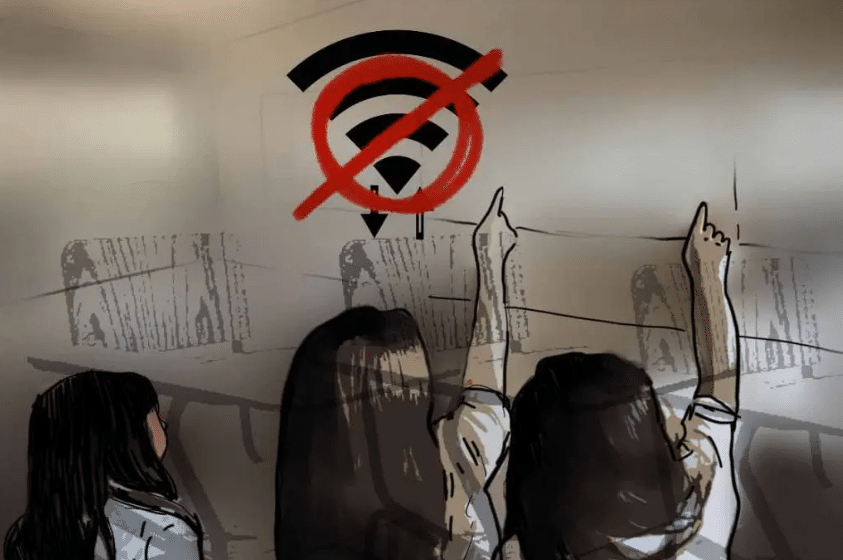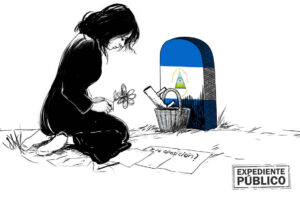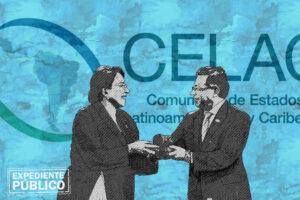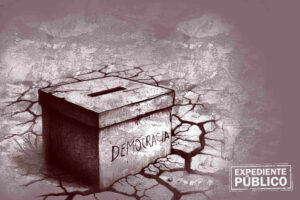**The arrival of COVID-19 in March 2020 filled the population with uncertainty. Many thought that confinement would only last about two weeks and that school would soon return to normal.
Expediente Público
On account of the new coronavirus pandemic, the government of Honduras ordered schools to close on March 12, 2020, as a preventive measure to contain the spread of the disease. Now, the school closure has continued for eleven months. How are students and teachers in the Honduran public education system coping with the COVID-19 situation?
Expediente Público spoke with Angélica Aguilar, a teacher with 26 years of experience, who works at the Lenca Government Middle School in Yamaranguila, located in the department of Intibucá in western Honduras, and one of the poorest areas of the country. Aguilar comments on the problems they have faced during the pandemic and the methods used with students who live in remote areas and do not have internet access.
“When the government gave the order to close the schools, we immediately informed the young people what was happening. We assigned them homework for two weeks, because we believed that in that time, the situation would improve. But, unfortunately we did not see our young people again from that time on, so we waited for a while, during April and part of May, until the school officials made the decision to meet through the Zoom digital platform, so that each of the teachers could take measures,” Aguilar said.
In Yamaranguila, one of the municipalities in the department of Intibucá, where Aguilar works, a large number of the school’s students come from remote villages in the area, which can make the journey to school difficult.
Read also: COVID-19 sinks the honduran economy in the face of government inefficiency
“What we did in our school was to organize ourselves. Each grade has a lead teacher, who is responsible for that group. We already had our grades assigned, so we immediately began to locate our students through phone numbers. We set up chat groups on WhatsApp, and through these groups we began to send homework to the students. But it turns out that there was a percentage of our students who were not receiving the homework,” Aguilar said.
When they found that a number of students were not receiving their assignments via WhatsApp because they live in remote areas where there are problems with the signal, the teachers designed other strategies so that these students would not be left out of the educational system and lose their school year.
The teachers made educational materials on physical paper so that they could be sent to the students’ villages, Aguilar said. “These young people, they can’t afford mobile phones, much less to pay for data packages and connect to the internet to take their classes.”
Majority without internet access
A number of public schools in Honduras are not conducting classes through a virtual platform; they only assign homework and send the students explanatory videos. The students must solve the assignments and send in their answers.
According to Casa Alianza, a civil society agency that ensures the protection of children’s and adolescents’ rights to education, the educational system was already showing problems in early 2020, with 1.2 million school-age children outside the system. And of the 1.8 million enrolled, at least 700,000 were going to drop out during the year. This was before the pandemic.
However, the coronavirus health emergency drastically changed the scenario, and in the fourth month of the pandemic, many parents were left unable to continue paying for virtual classes. The figure of 90% of students who were connected at the beginning of the pandemic and able to take virtual classes dropped to 45% by the fourth month, according to a report by the Professional Teacher’s Union College of Honduras.
Official data from the National Institute of Statistics (INE) for 2018 indicated that only 16.6% of the population had internet at home and only 12.8% accessed the internet through a computer. This being so, according to Casa Alianza, more than a million students do not have access to the technological tools to continue their studies, a problem that is accentuated in rural areas.
The coronavirus pandemic highlighted the already existing inequality between students from private and public schools in the national educational system. Of the latter, 80% have internet at home, in contrast to only 30% of public school students, according to the Casa Alianza report.
The elementary school where Aguilar teaches reflects this digital gap. According to her, in order to compensate somewhat for the students who could not connect to the internet, “each lead teacher contacted students who could not pick up their homework and went to their area to be able to deliver the educational materials. This is how we were teaching and taking care of the students all year long,” she said.
In June 2020, a group of civil society organizations issued a statement lamenting the fact that nearly two million students ages 3 to 17 were dropping out of the education system due to the COVID-19 situation.
Read also: COVID-19 pandemic will further deepen unemployment and poverty in Honduras
In their statement, the organizations indicated a series of recommendations that can help facilitate students’ access to education, including the use of television and radio to give better coverage to access to classes, noting that WhatsApp and phone calls should not be substituted for these tools.
No clear guidelines
For the current year of 2021, Angélica Aguilar says that they still do not have clear guidelines from the Secretary of Education on how to help the students. She recalled that the greatest challenge faced by the school where she works is that most of the students live on the outskirts of the urban area of Yamaranguila.
“We believed that this year we were going to continue the same as last year, but we had a teachers council meeting, because the Yamaranguila District leadership put forward a proposal at the department level, that we would be at school two days a week, Monday and Friday, to be able to teach the students in person, but only for high school. For elementary school, it was not allowed because the numbers are greater,” Aguilar explained.
In the case of elementary school students, they decided that the parents would go to the school to receive and deliver their children’s homework.
The quality of education in the pandemic remains a challenge. A report in the magazine Económica y Administración, from the Institute of Economic and Social Research of the National Autonomous University of Honduras (UNAH), titled “Challenges in the quality and coverage of public education in Honduras, 2014–2018,” explains that although the country has one of the highest expenditures on education in Central America, the results do not reflect the investment made by the government in terms of numbers or performance.
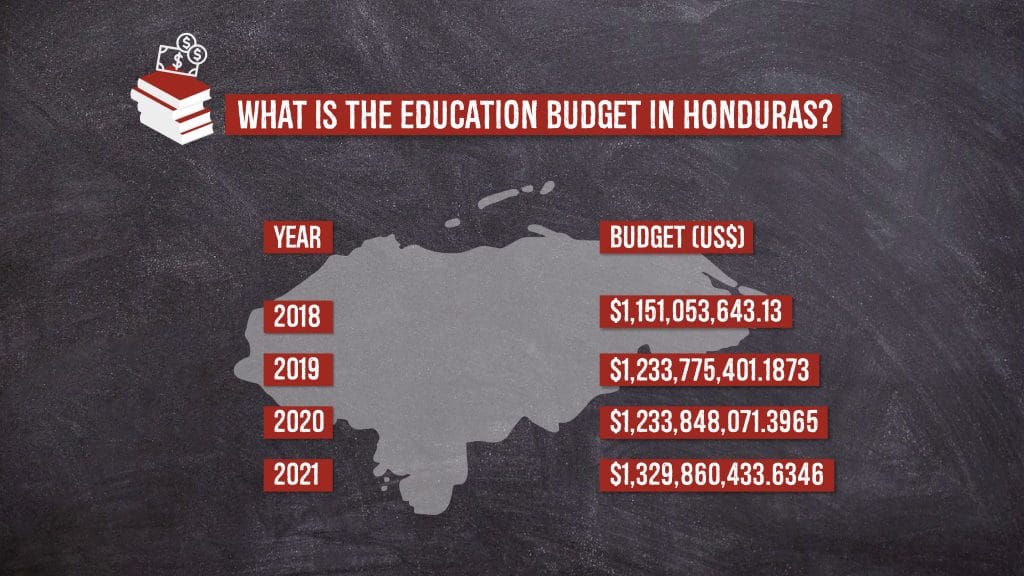
“Despite relatively high levels of public spending on education, Honduras faces significant limitations related to three elements that affect the supply and quality of education. In 2018, the public administration invested the equivalent of 6.1% of GDP in the national education system, the second highest level of investment in the Central American region, surpassed only by the neighboring country of Costa Rica (7.03%),” the magazine article notes.
“The magnitude of spending on education can also be viewed in relation to total government spending. According to figures from the United Nations Educational, Scientific and Cultural Organization (UNESCO), between 2014 and 2018, the Honduran State allocated an average of 24% of its national budget to the education sector, above the average for Latin America (17.8%).
The study indicates that during 2018, the current system left more than 900,000 Hondurans between 3 and 17 years old out of the national education system. “It is clear that the few advances have not been the same for all sections of the system“ the study stresses.
Meanwhile, the most recent report from the National and International Observatory of Education of the Francisco Morazán National Pedagogical University, from 2020, states that in Honduras, 67% of parents say that their children learned little or nothing in virtual teaching during confinement and they prefer that their children repeat the year or that they be withdrawn from the educational system.
“With more than half of the school-age population outside the educational system, a generational catastrophe is expected in 2020–2021; more young people in maras and local gangs, more crime and more poverty, due to the lack of educational inclusion and of social mobility” warned the organization Transformemos Honduras, a civil agency that brings together various organizations that monitor and investigate the state of education. Citing UNICEF, they warn that to avoid such a dramatic collapse, schools cannot be allowed to remain closed. They advocate a return to blended classes, with standardized biosecurity protocols, parent councils, a school schedule with staggered small groups, school lunches, and insurance, among other mechanisms.
Family difficulties
As a teacher, Aguilar is a witness to the impact of these figures; she has seen it and experienced it in the community where she teaches. When listing the barriers to accessible and quality education in the region, she mentions the poverty in which many of the families live. They barely have enough for their daily needs; they cannot be required to have smartphones and data packages to make use of the internet. To this, it can be added that many parents are not devoted to helping their children with their homework.
“For teachers, we still don’t have a computer here and we don’t have internet access. This has been another obstacle, as well as our lack of training in many of these systems. We haven’t been trained on technology issues, we have had to learn by ourselves,” said Aguilar.
Expediente Público spoke with two parents from Yamaranguila, who recounted the challenges they have faced with their children since the pandemic began.
Waldemar Ponce is a construction worker in the municipality of Yamaranguila who has two daughters in a school in the municipality. He said that the cost of buying data packages to use the internet, which has a poor signal in the area, has made learning difficult for his daughters.
“It costs quite a lot, because buying more air time is 10 lempiras (about 41 cents), but it doesn’t work because the signal is very poor in Yamaranguila. They (his daughters) have to go around looking for a signal and when they are sent videos explaining the classes, they don’t upload. So he chose to contract internet services for his home from a local cable company in the area, for which he now pays 700 lempiras ($28.91) a month.
You may be interested in: COVID-19 hits Honduras hard: First death reported as people ask for food and jobs
Ponce is a member of the parents’ association at his daughters’ school, and he says that many parents decided to withdraw their children due to the cost of internet and the poor signal in the area.
Luisa María García, mother of three children and a teacher by profession, unemployed due to the current situation, mentioned some of the new challenges of the educational method being implemented in public schools. “It’s a bit complicated; what the children want is to go out, (because) they are at home the rest of the year. When school starts they are happy, but as a result of this everything changed. There is too much stress, both for the children and for the parents,” she said.
García considered that teaching methods must change. “Handing in assignments just at the end is stressful and overwhelming for students. I know it’s a bit difficult because it happened suddenly, but as time went by, I think they should have surveyed the parents” she says.
Fear of contagion persists
García and Ponce agree that if schools reopened tomorrow with biosecurity measures, they would not send their children back to school.
“I wouldn’t send them, because here in Yamaranguila there are quite a lot of COVID-19 cases. It has spread throughout the municipality, and here in the urban area there are quite a lot. Other parents would not send their children either. The teachers have not met with the parents, because I planned to send them once every two weeks to bring and drop off their homework, “ added Waldemar Ponce.
